Magazine
Will India Win The World Cup?

Might a dark horse steal the show this time?
|
For all cricket lovers, the good news first. The 2007 World Cup will not, after all, be a one-horse race. Now, the bad news. The World Cup tourney might well prove to be a test of fitness and endurance, rather than of cricketing ability.
More on the good news. After lording over the cricket world (you just have to gloss over an occasional freak loss mid-stream to lowly Bangladesh) for nearly a decade since winning the World Cup in 1999, Australia is now showing feet of clay. February 2007- the month leading into the upcoming World Cup in the West Indies – has been a nightmare for the reigning champions with six losses in their last seven matches, first to England and then to New Zealand. Even more worrisome than the number are the margins by which the Australians lost those matches. The first inkling of their recent vulnerability came nearly a year ago in March 2006, when their star bowler Brett Lee in particular took a severe hiding as South Africa chased down Australia’s 434 for 4 – a truly unbelievable match. But the February 2007 losses to England, whom they had thrashed in the Ashes Test series earlier this season, exposed some chinks in the green-and-gold armour of the Australian uniforms. It was the first time they had lost the tournament in 14 years. Those chinks – centered mainly on their inept second-string bowling – were thoroughly exploited by the New Zealanders. When your bowlers concede a 10-wicket victory in Game One (another first in Australia’s One-Day history),and then flounder in defending totals of 336 and 346 in the Games Two and Three, it’s surely a alarming red signal going into the biggest of all tournaments. It might be cruel to call this good news. After all, a great team has lost like never before, and its fans are undoubtedly hurting. But Australia’s loss of form going into the World Cup has a brighter side for the genuinely non-partisan cricket buff. A shaky No. 1 raises visions of an upset at the top – in other words, a reworking of the cricketing world’s pecking order! And a change of guard is always time for deliciously surprising possibilities.
Let’s admit it, there’s also an extra thrill in seeing a cocky, arrogant and ill-mannered champion lose his crown: Australian cricketers are no role-models for gracious behavior. So, after more than a decade of the black-wash (mid-70s to late 80s) by the West Indies led by Clive Lloyd and Vivian Richards, and decade-plus thereafter of the white-wash by the Australians led by Allan Border, Steve Waugh, Mark Taylor and Ricky Ponting, is the color code changing to a shade of brown (India/Pakistan/Sri Lanka) or even a mixture of black-and-white mix (South Africa)? Or will it be a totally dark horse this time? I’m hinting at New Zealand who, aptly enough, sport a black attire for their One-Dayers. We will see. But the King from Down Under is not expected to abdicate the throne willingly. Please don’t expect the Aussies to turn over and play dead. On the field, a crunch situation brings out amazing reserves of derring-do and their tenacity is exemplary. I will never forget the steel they showed in the 2003 World Cup Semi-Final against Sri Lanka in Port Elizabeth, South Africa. Batting first on a difficult pitch, Australia managed just 212 runs in which Andrew Symonds pitched in with a gritty 91. A score of 212 seemed measly against the ebullient Sri Lankans who boasted of the likes of Jayasuriya and deSilva padded up to bat on an easing track. In the intermission between innings, Sri Lankan suppporters (and these included several Indians too, because India would likely face the winner of this match in the Final) were buoyant and even tempted to inquire from the locals about an appropriate joint for the post-match celebrations. They apparently hadn’t bargained for the Australian fire-power. Eleven Australians soon descended on the ground with such singular focus that they annihilated the Sri Lankan batting with scorching bowling and fielding. And then went on to win the Cup that weekend. So don’t count them out so easily.
About the only disappointing flaw in their otherwise admirable mental make-up is the Australian tendency to whine after a loss. Way back in 1969, they were thrashed in South Africa after playing an en route series in India. And what do you think senior Australian players said? They attributed the series defeat to the “malnutrition” they suffered eating food from “cockroach-infested” Indian kitchens. In the 1996-97 season, Australia played a one-off Test match against India in New Delhi and lost it – in more ways than one. After being skittled out by Kumble in both innings, they blamed the city’s air pollution for their miserable performance. Their more recent losses against England and New Zealand prompted wicket-keeper and vice-captain Adam Gilchrist (who is on paternity leave from the game) to crib to the media that his team is wilting under too much cricket and has been hamstrung by injuries. The first complaint is specious: Australia is not the only country facing punishing match schedules. And cricket anyway is much less physically demanding than other games. The second complaint about injuries holds more water, and in fact concerns the bad news bit to which I alluded at the start of this piece. Perhaps for the first time in World Cup history, every team with a reasonable chance to win – with the exception of South Africa – is carrying at least one or two key players whose fitness could still be in serious doubt when the tournament finally gets underway. Former Aussie captain Ian Chappell, now a wizened pundit in the commentary box, fears the tournament’s name might therefore have to change from “World” Cup to “Well” Cup. The team with 11 men standing till the end might well take the Cup home, he implies – cricketing skills be damned. As late February, the casualty list includes Brett Lee, Andrew Symmonds and Matthew Hayden for Australia, Munaf Patel, Yuvraj Singh and Irfan Pathan for India, Jacob Oram and Shane Bond for New Zealand, and Michael Vaughan and Kevin Pietersen for England. The list is not exhaustive, simply because a host of others, including the battery of Pakistani fast bowlers and our own Ajit Agarkar, are notoriously prone to break down during matches. Aside from the incumbent Australians who at their best have the resilience and professionalism to pull off upset victories, two non-Asian teams to watch out for are South Africa and New Zealand. The former have, ever since their re-induction into international cricket after decades of apartheid-related boycott, been reduced in earlier Cups to the bridesmaid but never the bride. Steve Waugh of Australia called them “a bunch of chokers” and Shaun Pollock & Co. lost 2003 on account of a combination of jittery nerves and simple mathematical miscalculation. But the law of averages and the law of cricketing balance favors them this time. Their only Achilles Heel is the lack of a good spinner – but that’s an endemic problem in One-Day cricket today. Otherwise, theirs is arguably the most finely balanced 11.
New Zealand, if it keeps current form going, can be a handful for any team on any day at any venue. To beat Australia three times in a row in the span of a week is no mean feat. Even their bench strength, unlike Australia’s, is dependable: Peter Fulton, who replaced the injured Oram, made a major difference in the Commonwealth Bank series. I know I have left West Indies out of contention. I do this with a heavy heart. For a team that won the first two World Cups in 1975 and 1979, and swaggered its way into history as a worthy competitor of Bradman’s Invincibles of the 1940s, it’s sad to see that team’s repuation tottering on arthritic knees. The fallen giant has not really regained his stride. To depend on a single batting genius – Brian Lara – to carry the team through a six-week-long tournament is just asking too much. The Caribbean swashbucklers however have the home advantage in this Cup, as well as the support and sympathies of all who grew up being entertained by their style and talent. As for the Asian teams and how they stack up against the reigning Australians, Pakistan teems with raw sporting talent – in cricket as well as in hockey – and those mercurial men in green are quite capable of springing a surprise if they keep their heads calmly together. That’s a big if, though. Only a towering, fiery yet restrained personality like Imran Khan could weld these mercurial and centrifugal talents, and shepherd them to the peak of their performance. Pakistan’s 1992 World Cup triumph is a case-study in managerial skill, inspiration and control. How many readers believe Inzamamul Haq has these qualities?
As for India, what can one say about a team that promises so much and delivers so little when it truly matters? Just that on that fateful March afternoon at the Johannesburg Wanderers Stadium in South Africa, I saw a beleaguered team of 11 Indians shrivelling in the face of a 350-plus Australian total in the 2003 World Cup Final. It was not the fact that we lost, but the way we folded up that still rankles. Ten from that squad of 15 players will represent a billion hopeful Indians again. They continue to form the crux of this team. Have they grown in cricketing stature and maturity?Or grown merely in terms of body weight and bank balance? India is still the strongest team on paper, but cricket sadly is played in the outdoors. Paper-bound statistics tell you feats of bat and ball, runs scored and wicket taken. They are silent about the catches dropped and runs conceded by dull-footed fielders. On paper, India boasts of at least three of the highest batting averages in One-Dayers – those of Sachin Tendulkar, Saurav Ganguly and Rahul Dravid. Virender Sehwag, Mahender Singh Dhoni and Yuvraj Singh are known for quick scoring: their strike rates (runs per 100 balls faced) are up there among the best in the business. Why do I sound a note of skepticism? Because quite simply I’m not sure the present bunch has enough all-rounders to tilt the scales in their favor. India won the 1983 World Cup prima facie on account of an inexplicable West Indian collapse. But discount this “good luck” factor for a minute and count the number of all-rounders in that team – at least seven or eight cricketers who were more-than-decent batsmen, bowlers and fielders. The only so-called all-rounder in the present squad is the reluctant Irfan Pathan who kept telling the media months ago that he was no all-rounder but just a bowler who could maybe bat a bit on his day. It turned out to be a self-convincing prophecy. Today, he falls short in both departments and has warmed the reserve bench for an inordinately long time. The same goes for out-of-form Sehwag, but like Pathan he too finds a place in the team. The problem with the team selection is that the selectors have failed to take a calculated wager on youth and relative inexperience. This might have been a knee-jerk anti-reaction to the excessive and ultimately futile experimentation process indulged in by coach Greg Chappell. However, in the process of rejecting it wholesale, the selectors have stuck to the same old medicine and overlooked an opportunity. That 10 of the present 15 are “repeaters” from the last World Cup speaks no doubt of a wealth of experience. But it also tells you that it’s an aging bunch. This could have a telling effect on our fielding, never a strong point of Indian cricket but a key factor in One-Day cricket where matches hinge oftentimes on a single run. Two of the country’s best fielders – Suresh Raina and Mohammed Kaif – are cooling their heels back in India. So is Ramesh Powar, a potential all-rounder who has impressed in every outing. Kaif was part of WC 2003 and is admittedly in poor form. But wait. If form is indeed the criterion how can the selectors justify Sehwag and Pathan’s choice? Having picked holes galore in the Indian team, I must now add a disclaimer. Cricket, like life, can turn out to be a grave-yard for grumpy predictions. That is its charm and its poetry. I hope and pray my misgivings are blown away by the men in blue. Rest assured, when and if Rahul Dravid lifts that Cup on April 28, I will count myself among the happiest men on this planet.
|

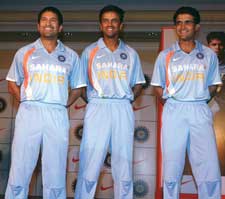
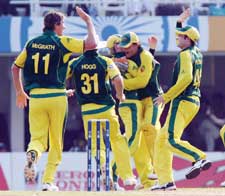
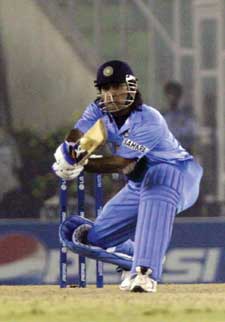
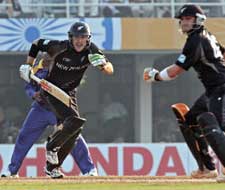
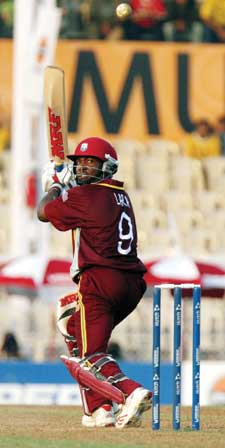
You must be logged in to post a comment Login